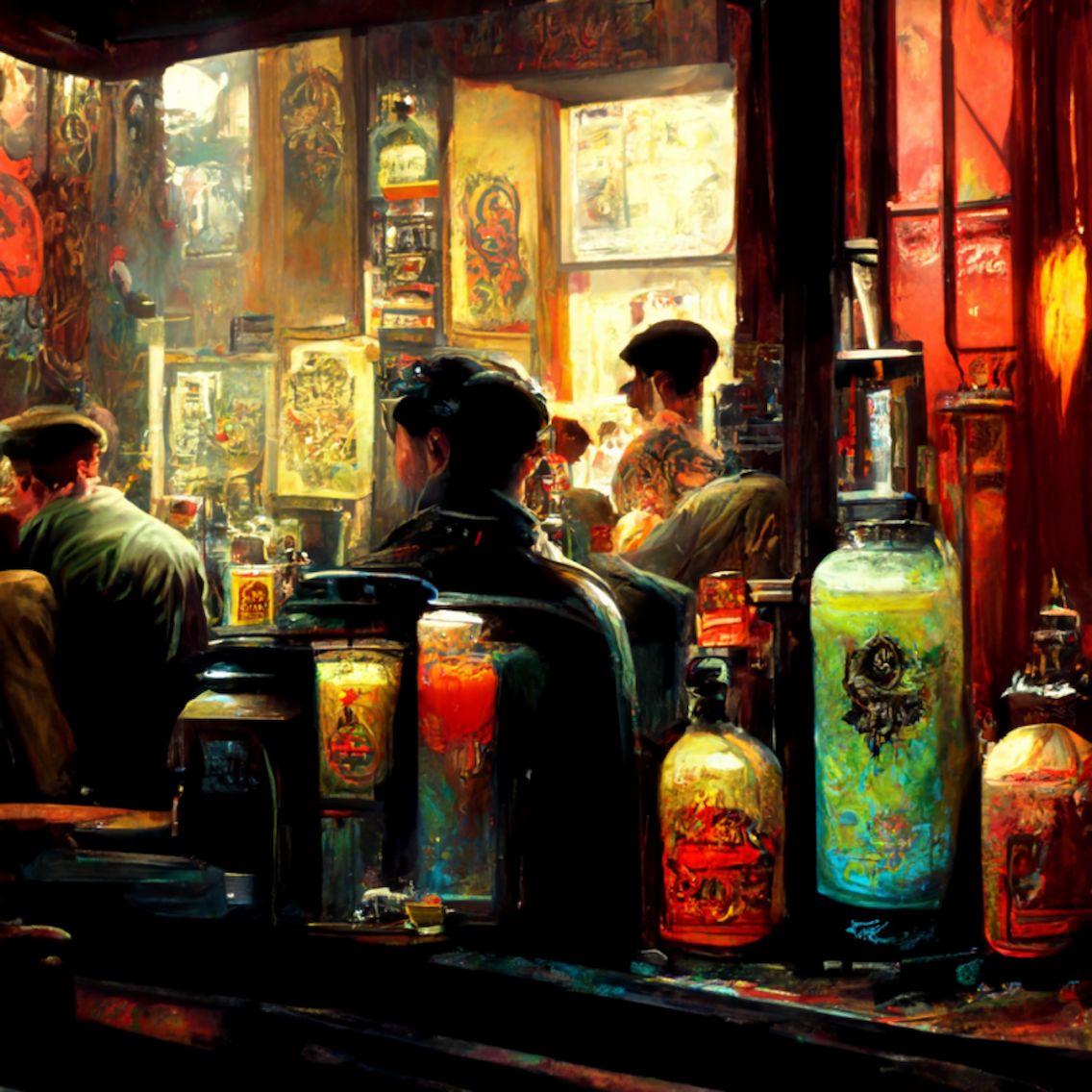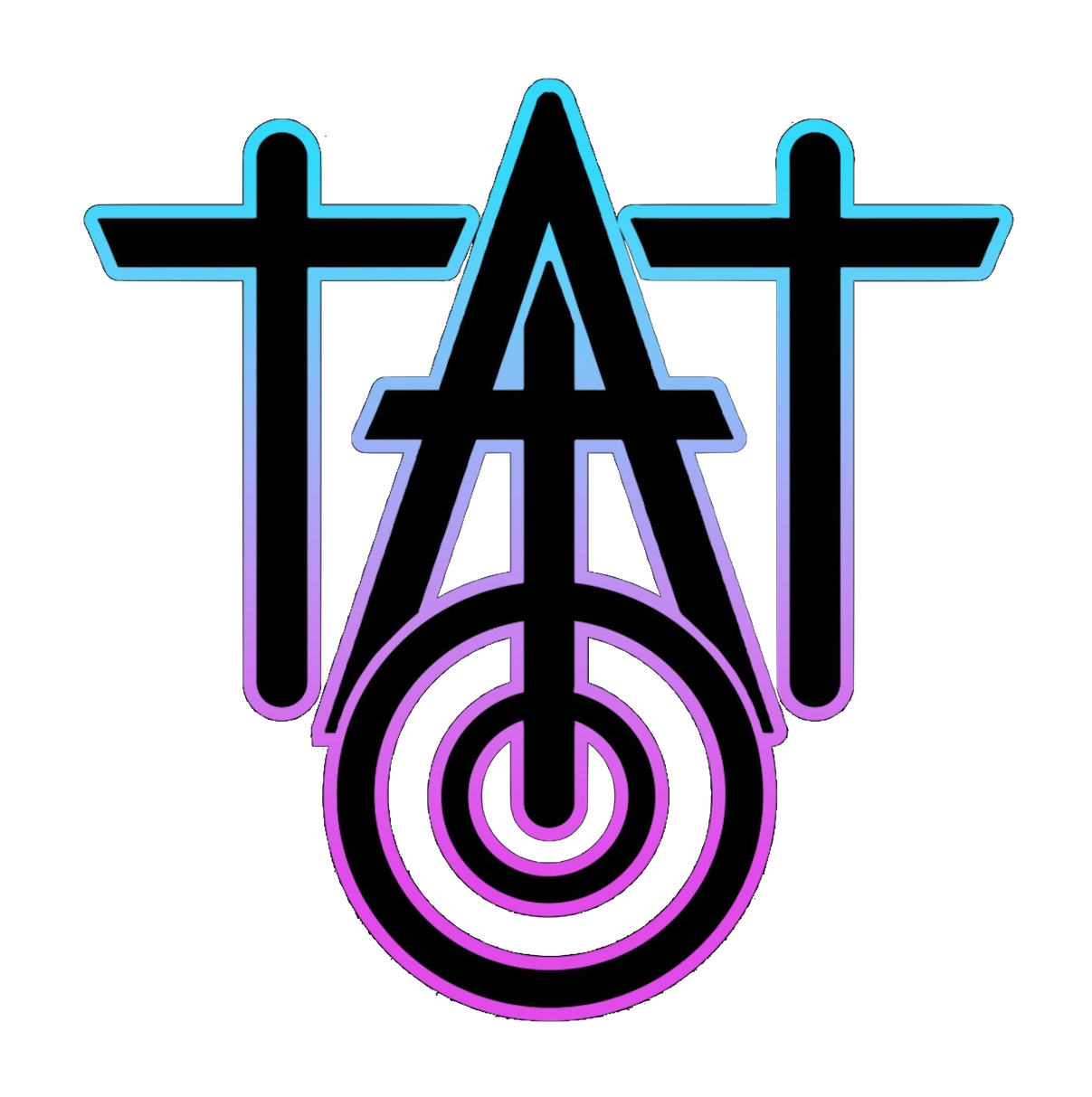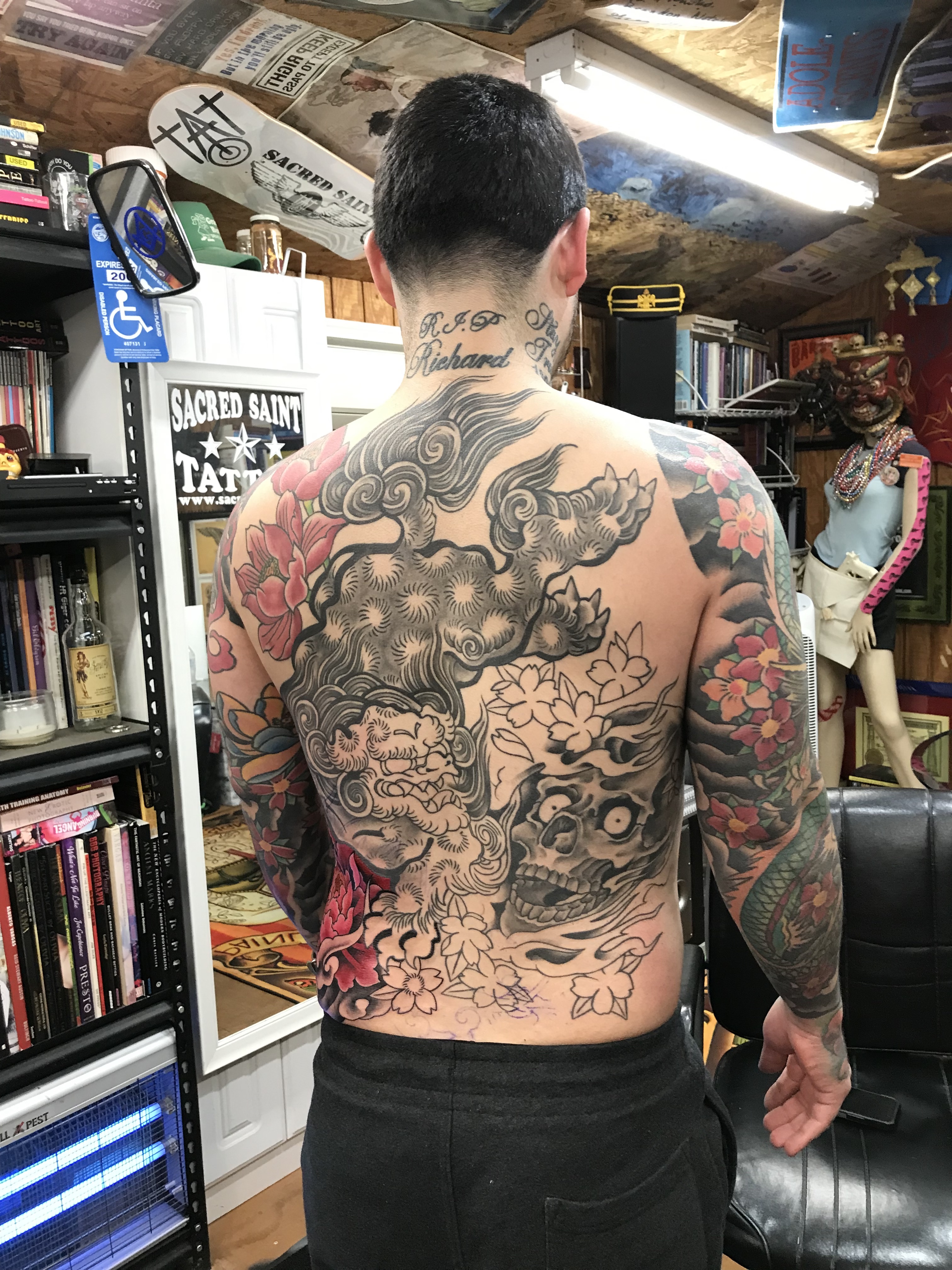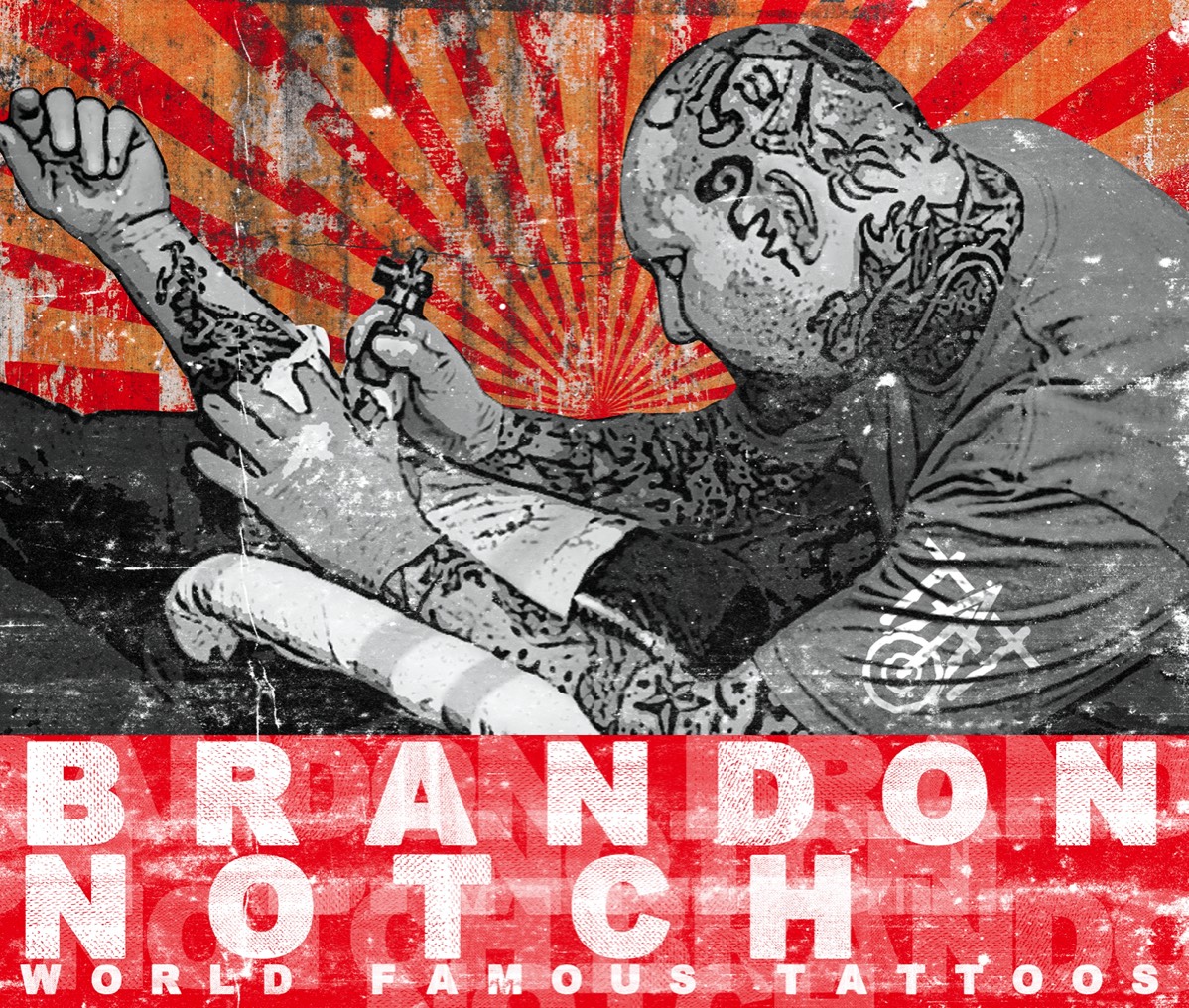



Sacred Saint Tattoo Studio
Top Quality, Clean, Safe, Artistic Tattooing by internationally recognized and well known artist Brandon Garic Notch.
Hidden away east of Los Angeles, just an hour away from the crowded sidewalks and the non-stop traffic of down town Los Angeles Is where you will find Brandon working.The internationally recognized artist, author, and actor Brandon Garic Notch. His studio is not your usual tattoo parlor, it's a private custom artistry workspace, clean and inviting. The world famous workspace known as Sacred Saint Studio. When you first step in for your consultation you will notice a unique and friendly environment clearly far from ordinary. It resembles more of a comfortable artistry studio rather than a body art facility, and definitely nothing like your friends tattoo shop. Brandon Notch wanted his clients to feel at home, comfortable while spending time under the needles and in his studio. Not only is the studio comfortable, it’s clean: offering top quality in workmanship and cleanliness in the Southern California area while keeping the prices reasonable. The work you can expect to see from Brandon ranges from traditional tattoos to vibrantly colored, black & gray, Japanese, and portrait tattoos. His specialty is large custom work with a mix of Japanese and traditional American, Brandon does have plenty of books to inspire his clients and keep his mind fresh. You will get nothing short of top quality, clean, safe, artistic tattooing by internationally recognized and well known artist Brandon Garic Notch.

Japanese inspired chest panel tattoo by Brandon Notch

Japanese inspired tattooing by Brandon Notch

Japanese and traditional American inspired tattoos by Brandon Notch

Traditional American and Japanese fusion wolf tattoo by Brandon Notch

Ocean themed tattoo sleeve by Brandon Notch

Ocean themed tattoo sleeve by Brandon Notch

Ronald McDonald tattoo sleeve by Brandon notch

Traditional American new school tattoo sleeve by Brandon Notch

Traditional American with a New school twist tattoo sleeve by Brandon Notch

Japanese tattoo sleeve by Brandon Notch

Japanese Koi fish tattoo sleeve by Brandon Notch

Koi Fish Chrysanthemum spider mum tattoo sleeve by Brandon Notch

Koi fish and Cherry blossoms in water tattoo sleeve by Brandon Notch

Japanese skull and snake tattoo by Brandon Notch

Woman zombie tattoo by Brandon Notch

Skull in water tattoo by Brandon Notch

Japanese dragon leg sleeve tattoo by Brandon Notch

Japanese leg sleeve tattoo by Brandon Notch

Asian leg sleeve tattoo by Brandon Notch

Asian dragon leg sleeve tattoo by Brandon Notch

Dragon leg sleeve tattoo by Brandon Notch

Japanese color koi fish tattoo sleeve by Brandon Notch

Japanese Koi fish tattoo by Brandon Notch

Japanese color koi fish tattoo sleeve by Brandon Notch

Japanese peony, water, and cherry blossom tattoo sleeve by Brandon Notch

Japanese Raijin Tattoo by Brandon Notch. (In Progress)

Japanese peacock backpiece tattoo by Brandon Notch

Japanese Oni backpiece tattoo by Brandon Notch

Saint Michael and American traditional roses tattoo by Brandon Notch

Saint Michael and American traditional roses tattoo by Brandon Notch

Guardian lion, also known as komainu, shishi, or foo dog and flowers backpiece tattoo in progress by Brandon Notch

Guardian lion, also known as komainu, shishi, or foo dog and flowers backpiece tattoo by Brandon Notch (in progress)

Brandon Notch working away tattooing circa 2023

Brief History of the Japanese Tattoo
Here is a small article I have found on the Japan Institute website. Tattooing in Japan is generally referred to as Irezumi, but more specifically the traditional Japanese tattoo style is referred to as Wabori.
Brief History of the Japanese Tattoo Tokugawa period, also called Edo period, (1603-1867) As the power of the common people and working classes of Japan grew in the latter half of the Edo period (circa 18th century) horimono, or traditional Japanese tattoos, began to flourish as an art form. Using images from traditional water color paintings, woodcuts and picture books of the time as designs, the ultimate reward for the patience and endurance of pain would be a tattoo of immense beauty. To experience and enjoy Japanese horimono tattoos it is important to understand their history and background, and it is also important to continue to preserve the traditions behind them. The origins of traditional Japanese tattoos can be traced back to the latter years of the Edo period in Japanese history. In 1603, the then ruler of Japan, Tokugawa Ieyasu, centralised his shogunate government in Edo, what is now Tokyo. In the 200 years following this, the established feudal system began to stagnate, and in opposition to the martial upper classes, the common people of Edo began to develop their own separate, unique culture for themselves.
Rejecting the centuries-old strict ethics and morality of the Confucian beliefs of the samurai and taking up themes based on duty, ninjo (human experiences and feeling), fashion and comedy the townspeople of Edo increasingly began to enjoy novels, drama, comic tanka songs and theatre. Books such as kokusenyagassen by Chikamatsu Monzaemon, Honchohsuikohden, and Satomihakkenden by Takisawa Bakin. Plus many other publications, along with picture books and artwork all combined to develop into a system that became a massive outlet of cultural expression for the ordinary people of the Edo period.
In this way the society of Edo progressed, and the pride and mentality of the ordinary people, manifested in such ways as dategokoro (foppish male fashion) and shokunin-kishitsu (the pride and way of thinking of the Edo working classes) of the tobishoku, or blue-collar workers, grew amongst such townspeople as labourers, manufacturers, hikeshi or firemen (in 18th century Edo urban fires were commonplace, and a major cause of mortality, as well as an ample source of tales of heroism) and petty crooks known as gaen. Some of these predominantly working class people of Edo, in imitating the heroes of the folk story Suikohden, as popularised at the time by the famous woodblock artist Kuniyoshi (Suikohden was a legend originating in China, where outlaws who, in defying the local corrupt authorities became folk heroes as protectors of the common people; an oriental equivalent of Robin Hood) began to ritualistically and painfully tattoo themselves with designs based on folklore, such as dragons, giant snakes and Chinese lions, and also with religious figures such as the Bhudda, Fudomyo (the God of Fire), Fujin and Raijin (the Gods of Wind and Lightning) and Kannon (the Goddess of Mercy) using sharp needles to insert pressed charcoal ink under their skin.
The people who carried out such tattooing tended to be ukiyoe woodblock artists, who simply exchanged their wood-carving blades for long, sharp needles. As time progressed however, some of these artists specialised in tattooing and came to devote all their time to tattooing only, and thus became tattooists. This long process has come to produce what is known as the uniquely-Japanese traditional art form, horimono.
There are written records indicating that in Edo as early as 1830 there were formal gatherings of tattoo enthusiasts. Although nowadays tattoo conventions are common both in Japan and in the West, the fact that in Edo such conventions were taking place over 150 years ago is an indicator of the long and rich history of traditional Japanese tattoos. The tattoos of the Edo, Meiji and Shohwa eras are described in the classic 1936 work, Bunshin Hyakushi, or One Hundred Tattoo Figures and Stories, by Tamabayashi Haruo. In the book, the life and works of some of the famous tattooists of the Edo period are described, such as Karakusagonta (from Asakusa), Darumakin and Iso (Yanaka), Charibun (Asakusa), Horitsun (Kameido), Ichimatsu (Asakusa), Kane (Yottsuya) and Horiichi (Osaka). However there is no photographic record of their works and designs, and so one must go by their considerable word-of-mouth reputation. Horiuno was born Kamei Unosuke in Kanda, Edo in 1843. At this time, tattoos were undergoing a surge in popularity amongst the people of Edo.
Horiuno became a tattooist at the age of 20, but travelled extensively throughout Japan, such as to Osaka, Kyoto and Shizuoka, and only really began working full-time from the age of 40. However, he continued his business well into his 70s and much of his work can still be seen today. Many of his customers were workers in the local construction and manufacturing industries, and in 1912, some of these locals of the Kanda area formed the Kanda Choyu-kai, literally "Tattoo Friends Society of Kanda", and 10 years later, extended membership to those outside the Kanda area, to form the Edo Choyu-kai. The members of this group, who consisted mostly of labourers such as construction workers, carpenters and plasterers, would meet every year at places such as Ojinanushi-no-taki and Marukotamagawaen, taking part in mass outdoor banquets, or in festivals such as the Asakusa Sanja-matsuri, showing off their extensive and intricate body tattoos with pride. Horiuno was well known throughout Japan and also overseas, and was said to be Japan's most talented tattooist. However, at that time a wealth of equally-skillful tattooists, such as Horiiwa, Horikane, Kyuta and Nekokichi could be found throughout Japan.
Shimada Kunihiro, Japan Tattoo Institute Translated by Adam Guy